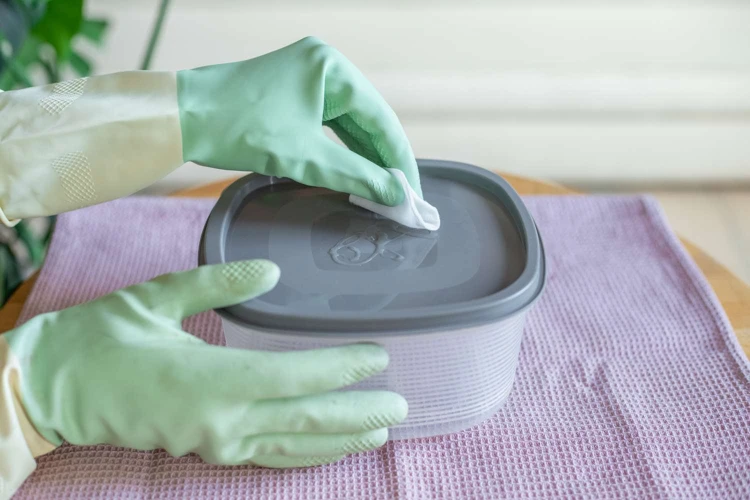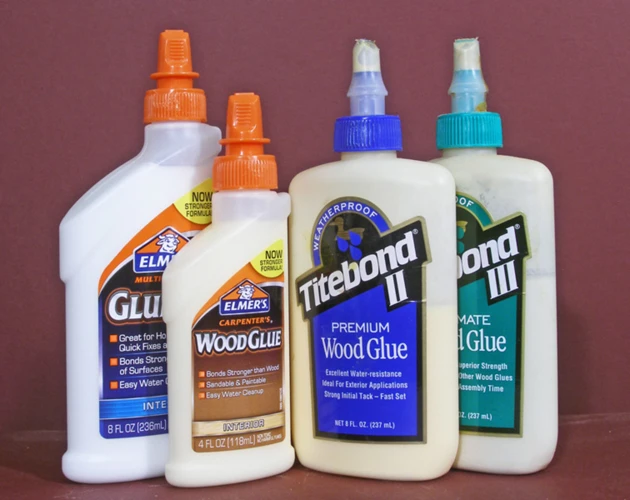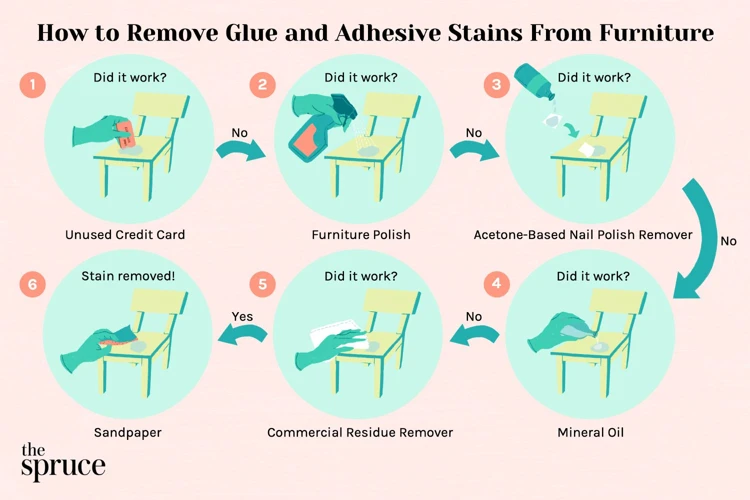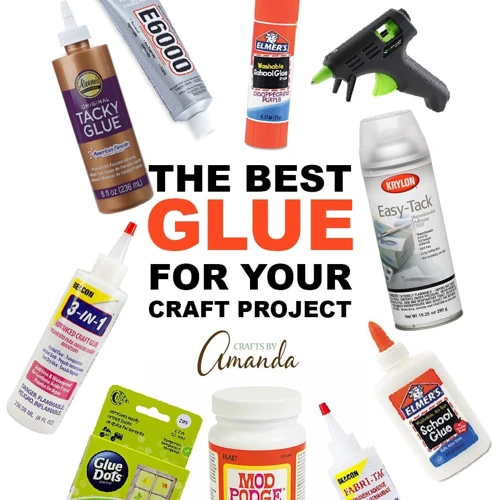Have you ever tried to glue together PVC pipes or fittings, only to accidentally get some super glue on the wrong spot? It can be frustrating and seem almost impossible to remove. But don’t worry, we’ve got you covered. In this ultimate guide, we will take you step-by-step through the process of removing super glue from PVC. Whether it’s a small dot or a large spill, we’ll show you how to get it off without damaging the surface. So, grab the materials needed and let’s get started!
Why is Removing Super Glue from PVC Important?
The accidental spill of super glue on a PVC surface happens more often than you might think. Whether it happened to you when working on a DIY project, or you accidentally got a drop of glue on a PVC floor, it is critical to remove it immediately. In this section, we will discuss the importance of removing super glue from PVC. We will explain how leaving the glue on the surface can cause damage long-term and impact its aesthetic value. Understanding why it’s crucial to remove glue can help you take the necessary steps to protect your PVC surface.
Prevents Damage to the Surface
Prevents Damage to the Surface
When super glue comes in contact with PVC surfaces, it can cause damage over time if not removed properly. The longer the glue sits on the surface, the harder it is to remove and the more likely it is to cause damage. It is essential to remove super glue from PVC as soon as possible to prevent any potential damage.
Damage can occur in several ways. First, because super glue forms a strong bond, it can adhere to the PVC surface tightly, making it difficult to remove without damaging the surface. Second, repeated attempts to remove the glue using harsh chemicals or abrasive materials can cause discoloration or even chipping of the PVC surface.
Damage prevention is key, since fixing damaged PVC can be costly. Prevention starts with ensuring that the correct materials are used to remove the glue and avoiding harsh chemicals or abrasive materials. The use of a gentle acetone solution on a cotton ball or a mixture of baking soda and acetone can help to loosen the glue while being gentle on the PVC surface. Using olive oil and dish soap is another option, but make sure not to leave the mixture on the surface for too long to avoid the risk of discoloration.
Also, be sure to test the solution on a small, inconspicuous area of the PVC surface before applying it to the glue stain. This will help ensure that the solution will not cause any damage to the surface. If the glue is still difficult to remove or there are larger areas of glue, consider seeking the help of a professional who has experience handling PVC surface damage.
Removing super glue from PVC is an important undertaking, and doing so with care will help prevent the potential damage. By following the proper steps and taking precautions, you can safely remove the glue and restore the look of your PVC surface.
If you are interested in other ways to remove glue from different surfaces, check out our article on how to remove glue from window frames.
Maintains Aesthetic Value
Maintaining the aesthetic value of PVC is one of the key reasons why removing super glue from the surface is important. When left untouched, the glue can form a stubborn and unsightly stain that can be challenging to remove. This can detract from the overall appearance of the PVC, making it look unattractive and even dirty. Using the wrong method of removal can even lead to damage, causing permanent blemishes on the surface of the PVC.
To avoid diminishing the aesthetic appeal of your PVC surface, it’s important to remove any super glue stains as soon as possible using safe and effective methods. There are several methods available that can help you remove the glue quickly and easily, without damaging the PVC surface.
One way to prevent damage to the aesthetic value of your PVC is by testing the solution you plan to use on a small, inconspicuous area of the material before applying it to the glue stain. This will ensure that the solution does not cause any discoloration or other types of damage to the surface.
Another important way to maintain the visual appeal of the PVC surface is to use gentle rubbing motions when applying the acetone or nail polish remover to the glue stain. Rubbing too hard or using abrasive materials can scratch or otherwise damage the surface, making it look worse than the glue stain itself.
By removing the super glue from your PVC as soon as possible and by utilizing safe and effective removal methods, you can maintain the visual appeal of your PVC and keep it looking brand new. If you need further assistance with removing other types of glue or adhesives from various surfaces, we recommend checking out our guide on what dissolves nit glue.
Materials Needed
Materials Needed:
1. Acetone or Nail Polish Remover – Acetone or nail polish remover is an effective solvent that helps break down the bond of the super glue from the PVC surface. It is easily available in the market or at home.
2. Cotton Balls or Clean Cloth – Cotton balls or a clean cloth can be used to apply the acetone or nail polish remover solution on the glue stain. It is important to use a soft cloth to avoid any scratches on the PVC surface.
3. Baking Soda (Alternative Method 1) – While this is not necessary for the main method, baking soda can be used as an alternative method for removing super glue from PVC.
4. Olive Oil and Dish Soap (Alternative Method 2) – This is another alternative method that involves using olive oil and dish soap to remove super glue.
It is important to note that it is best to use gloves while handling acetone or any other chemicals to avoid any skin irritation or allergic reactions.
Step-by-Step Guide on Removing Super Glue from PVC
Removing super glue from PVC can be a challenging task, especially if you don’t know the proper steps to take. Super glue is a highly effective adhesive that can bind almost any surface together, but it can also be a headache if it accidentally ends up on surfaces like PVC. In this guide, we will take you through a step-by-step process of removing super glue from PVC without causing any damage to the surface. Before we dive into the steps, let’s take a quick look at why it’s essential to remove super glue from PVC.
Step 1: Test the Solution
It is important to test the solution you will be using to remove super glue from PVC before applying it to the affected area. This step will ensure that the solution you are using will not cause any damage or discoloration to the PVC surface. To test the solution, follow these steps:
Step 1: Choose an inconspicuous area on the PVC surface, such as the bottom or backside, and apply a small amount of the solution on it.
Step 2: Wait for a few minutes and check if there is any discoloration or damage to the surface. If there is no visible damage, proceed to the next step.
Step 3: If there is any damage or discoloration, stop using the solution and consider alternative methods or seek professional help.
This step is crucial to ensure that the solution does not cause any further damage to the PVC surface. It is important to note that different solutions may have varying effects on PVC surfaces, so testing them before use is necessary.
If you accidentally got super glue on your cat, check out how to get glue trap off cat for proper removal methods.
Step 2: Apply Acetone or Nail Polish Remover on a Cotton Ball
To proceed with the second step of the process, you will need to apply acetone or nail polish remover on a cotton ball. Acetone and nail polish remover are effective solvents that break down the super glue and weaken its bond from the PVC surface. Keep in mind that these chemicals are harsh and may damage the PVC surface if not used properly, so proceed with caution.
Here are the materials needed for Step 2: Apply Acetone or Nail Polish Remover on a Cotton Ball:
| Materials | Descriptions |
|---|---|
| Acetone or Nail Polish Remover | Effective solvents that break down the super glue |
| Cotton Ball | Used to apply the solvent on the glue stain |
Once you have the materials, proceed by applying the acetone or nail polish remover on the cotton ball. Saturate the cotton ball with enough solvent to cover the glue stain and avoid dripping the solution on other parts of the PVC surface. It is best to work in a well-ventilated area and wear protective gloves to prevent skin irritation.
Note that some PVC surfaces may react differently to solvents, and it is best to test the solution in a small, inconspicuous area before applying it on the glue stain.
If you want to discover other tricks for getting rid of excess glue, check out our detailed guide on how to melt adhesive glue.
Step 3: Rub Gently on the Glue Stain
After applying the acetone or nail polish remover on a cotton ball in step 2, it’s time to move on to the next step. Take the saturated cotton ball and rub gently on the glue stain on the PVC surface. Be sure to apply only light pressure, working in a circular motion. Don’t be too hasty and apply too much pressure as this can cause damage to the PVC surface, which you don’t want.
It’s important to note that you may need to repeat the process a few times before all the glue is completely removed. If this is the case, simply re-saturate the cotton ball with acetone or nail polish remover and repeat the gentle rubbing on the glue stain until all the glue is gone.
If the glue has been on the PVC surface for a while, it may take a bit more elbow grease to remove. Be patient and persistent, and the glue should come off eventually. If you find that this method is not working, or you are worried about causing damage to the PVC surface, there are alternative methods available. Some of these methods include using a baking soda and acetone paste, or a mixture of olive oil and dish soap. Make sure to read the alternative methods section to determine which method may work best for you.
It’s important to note that this method of removing super glue from PVC can also be applied to other surfaces such as wood, couches, and skin. Be sure to read our other articles on how to remove contact paper glue from wood, how to remove nail glue off skin, how to get super glue off a couch, and how to get tape glue off wood.
Now that you know the steps to remove super glue from PVC, it’s time to move on to the precautions to take section.
Step 4: Repeat Steps 2-3 if Necessary
Once you have rubbed the solution on the glue stain in step 3, you should check to see if the stain has disappeared. If it has not, you can repeat steps 2 and 3 until the glue is removed. It may take a few attempts to completely remove the glue, so don’t be discouraged if it doesn’t come off right away.
Tip: You can also try using a plastic scraper to gently scrape the glue off, but be careful not to scratch the PVC surface. If you do choose to use a scraper, make sure it is made specifically for use on plastic surfaces.
If you find that repeating steps 2 and 3 still hasn’t removed all of the glue, there are alternative methods you can try. One of these methods involves using baking soda and acetone. This mixture can be effective in breaking down the glue and removing it from the PVC surface without damaging it. You can find the full instructions for this alternative method under the “Alternative Methods” heading.
It’s important to note that while these methods are effective in removing super glue from PVC, they may not be suitable for all types of glue. For example, if you are trying to remove nail glue from PVC, you may need to use a different method than what is described in this article. You can find instructions for removing nail glue in our article “How to Melt Nail Glue: A Step-by-Step Guide“. Alternatively, if you are trying to remove magnetic lash glue from PVC, you can check out our article “How to Remove Magnetic Lash Glue: Tips and Tricks“.
It’s important to take the necessary precautions when attempting to remove super glue from PVC. This includes wearing gloves and working in a well-ventilated area. You should also avoid using harsh chemicals or scrubbing too hard, as this could damage the PVC surface. For more information on the precautions you should take, see the “Precautions to Take” heading.
Alternative Methods
When traditional methods for removing super glue from PVC fail, it can leave you feeling perplexed and frustrated. However, don’t give up just yet! There are alternative methods that you can try, which involve using products that you may already have in your home. These methods may take a bit more effort, but they could be just what you need to get rid of that stubborn glue stain. Let’s take a look at some of these alternative solutions and how to use them effectively.
Using Baking Soda and Acetone
One alternative method for removing super glue from PVC involves using a combination of baking soda and acetone. This method is particularly useful if you do not have acetone or nail polish remover readily available. However, it is important to note that this method may not be as effective as using acetone or nail polish remover alone.
Materials Needed:
| Baking soda | Acetone | Cotton swabs |
|---|---|---|
| 1 tablespoon | 1 tablespoon | 2-3 |
Step-by-Step Guide:
1. Mix the baking soda and acetone in a small bowl or container. The mixture should have the consistency of a paste.
2. Use a cotton swab to apply the paste directly onto the super glue stain on the PVC surface.
3. Gently rub the paste onto the stain, using circular motions. Be careful not to scrub too hard as this may damage the PVC.
4. Leave the paste on the stain for at least 5-10 minutes to allow it to penetrate the glue.
5. Use a clean, damp cloth to wipe away the paste and the glue residue. If any of the glue remains, repeat the process until the stain is completely removed.
Precautions:
As with any method of removing super glue from PVC, it is important to take precautions to protect yourself and the surface you are working on. When using baking soda and acetone, make sure you work in a well-ventilated area to avoid inhaling fumes. Wear gloves to protect your skin and avoid contact with the solution. Also, do not leave the paste on the PVC surface for too long, as it may cause damage.
While using baking soda and acetone is a viable alternative to traditional methods of removing super glue from PVC, it may require a bit more effort, time, and patience to get the job done.
Using Olive Oil and Dish Soap
An alternative method for removing super glue from PVC involves using olive oil and dish soap. This method is perfect for individuals who do not have access to acetone or nail polish remover. Here are the steps to follow:
| Materials Needed: | |
|---|---|
| Olive oil | |
| Dish soap | |
| Warm water | |
| Soft-bristled brush or cloth |
1. Mix equal parts olive oil and dish soap in a bowl or container.
2. Apply the mixture onto the super glue stain on the PVC surface.
3. Let it sit for about 30 minutes, allowing the mixture to penetrate and loosen the bond between the super glue and PVC.
4. After the 30 minutes have elapsed, use a soft-bristled brush or cloth to gently scrub the stained area. Rinse the area with warm water to remove the mixture.
5. Repeat steps 2-4 as necessary until the super glue stain is completely removed.
It’s important to note that the longer the mixture sits on the super glue stain, the better the chance of success in removing the stain completely. This method may take longer but is a more gentle alternative and less likely to cause damage to the PVC surface.
In order to avoid damaging your skin, make sure to wear gloves when handling olive oil or dish soap. Also, do not use any abrasive tools or scrubbers on the PVC surface as these may cause damage.
By following these steps and taking the necessary precautions, you can easily remove super glue from your PVC surface using olive oil and dish soap.
Precautions to Take
When removing super glue from PVC, it is important to take certain precautions to avoid any damage or harm. Here are some key precautions to keep in mind:
Protect your skin: Acetone and nail polish removers can be harsh on the skin. Before starting the removal process, consider wearing gloves to protect your hands and fingers. Also, avoid touching the acetone-soaked cotton ball directly with your skin.
Avoid inhaling fumes: Acetone can release strong fumes that can cause dizziness, irritation of the eyes, nose, and throat, and even headaches. It is important to work in a well-ventilated area. Open windows, turn on fans, and ensure that the area is properly ventilated while using acetone or nail polish remover.
Work in a safe area: Acetone and nail polish removers are flammable and should be kept away from any heat sources. Ensure that you work in a safe area away from flames, sparks, and other sources of heat.
Test the solution: Before applying acetone or nail polish remover directly to the PVC surface, it is critical to test the solution on a small, inconspicuous area first. This will help you determine if the solution will cause any discoloration or damage to the PVC surface.
By taking these precautions, you can ensure your safety and avoid any damage while removing super glue from PVC.
Conclusion
In conclusion, removing super glue from PVC surfaces can be a daunting task, but it is possible. The key is to act quickly and use the right materials to avoid causing damage to the surface. A mixture of acetone and cotton balls tends to be the most effective method, as it breaks down the glue bonds without damaging the PVC.
It is important to note that prevention is always better than cure. Avoid placing super glue near PVC surfaces or handle with care to prevent accidental spills. If super glue does come into contact with PVC, be sure to take action promptly to avoid permanent staining or damage.
Overall, with the right materials and techniques, removing super glue from PVC is possible without causing harm to the surface. Be sure to take all necessary precautions and test any solution on a small, inconspicuous area before attempting to remove the glue stain. With patience and care, you can restore your PVC surface to its original condition.
Frequently Asked Questions
1. Can I use any type of nail polish remover to remove super glue from PVC?
No, it is important to use an acetone-based nail polish remover as it contains ingredients that can break down the glue.
2. How long should I let the nail polish remover sit on the glue stain?
It is recommended to leave it on for 2-3 minutes before rubbing gently.
3. Can I use a plastic scraper to remove the glue?
No, using a plastic scraper can scratch the surface of the PVC and cause damage.
4. Do I need to rinse the PVC after removing the glue with acetone?
Yes, it is important to rinse the area thoroughly with water to remove any residue from the acetone solution.
5. How do I know if the acetone solution is safe to use on my PVC surface?
You should always test the solution on a small, inconspicuous area of the PVC surface first to ensure that it does not cause any damage or discoloration.
6. Can I use vinegar to remove super glue from PVC?
No, vinegar is not effective in breaking down the glue and may even cause damage to the PVC surface.
7. Will the baking soda and acetone method work on all types of super glue?
The baking soda and acetone method is most effective on cyanoacrylate-based super glue. Other types of super glue may require different removal methods.
8. Can I use a hair dryer to heat up the glue before removing it?
No, using a hair dryer can cause the glue to bond further to the PVC surface and make it more difficult to remove.
9. Do I need to wear gloves when working with acetone?
It is recommended to wear gloves to protect your skin from the harsh chemicals in acetone.
10. What should I do if the glue stain is still visible after attempting all the removal methods?
If the glue stain remains, it may be best to seek the help of a professional who can safely remove the stain without causing further damage to the PVC surface.



